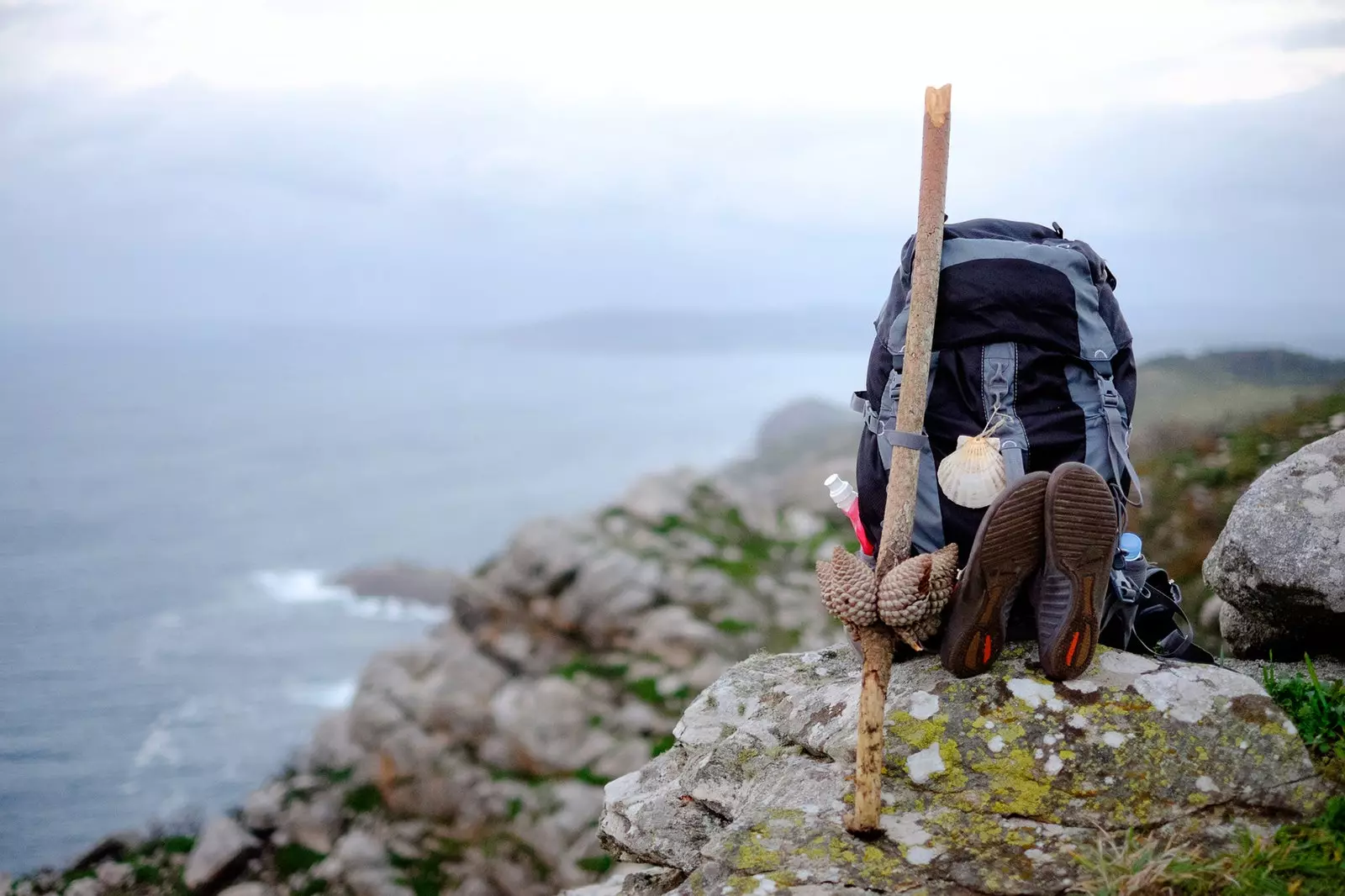
This is the Way that puts you (even more) to the test, pilgrim
“The pilgrim arrives in Compostela annealed due to the asphalt. It deserves a true path, of love and scenic beauty”.
With this motto, Campio Salgueiro, his wife Maite and his two children delved into the documents of the province of Pontevedra until trace a Camino de Santiago enxebre (authentic) . Of its 175 km through the land of Galicia, only 15 km are urban.
His itinerary takes up salt smuggling routes, 'white gold', military cartography, equestrian trails and crosses rivers that force the walker to change pants for a bathing suit and pass with the backpack on the head. A walk for experts that recovers the usefulness of the botafumeiro of the Cathedral: to hide the smell of the pilgrim.
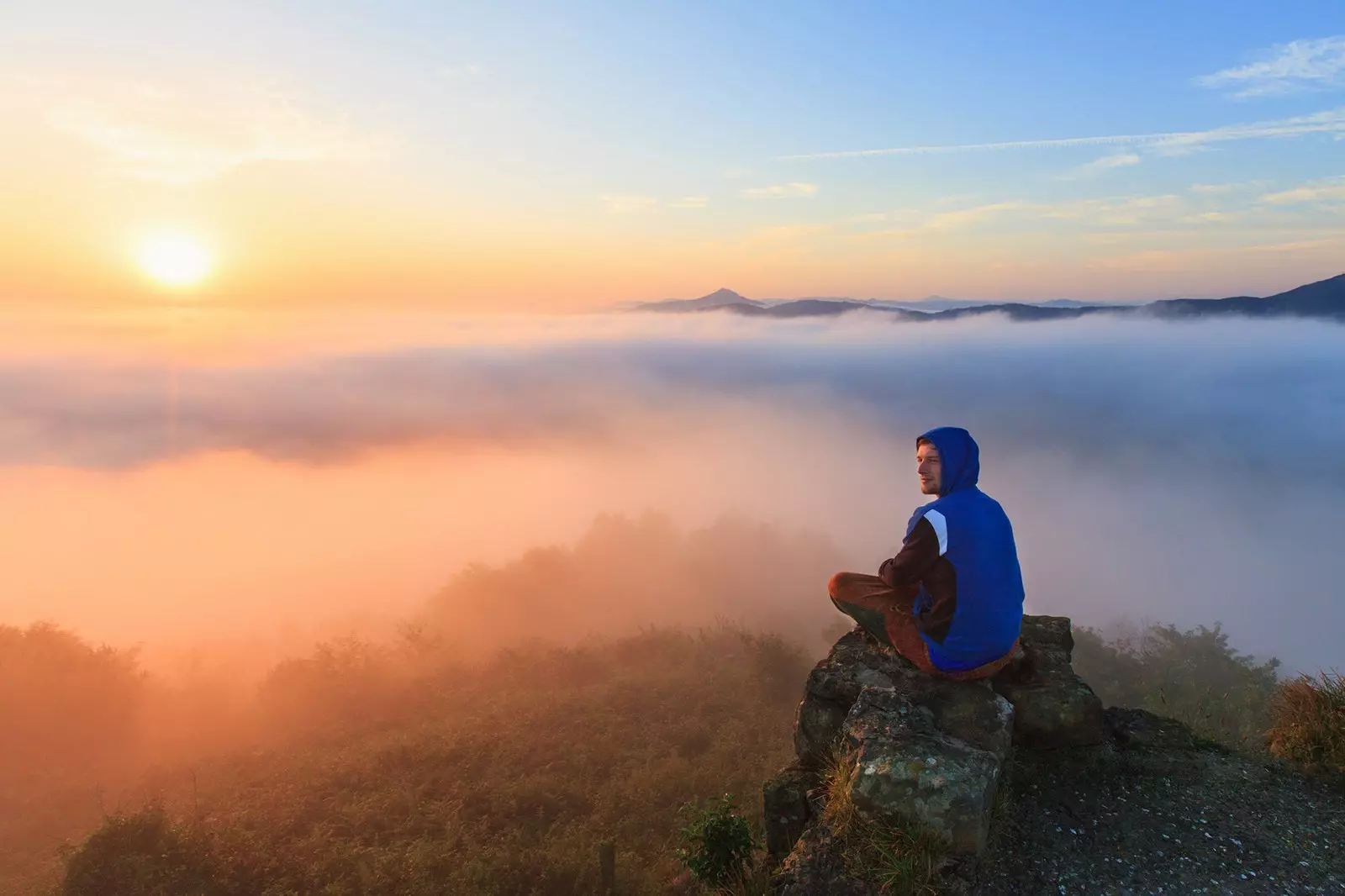
Hike only suitable for experts
FIRST STAGE. PRAIA DE CAMPOSANCOS - TORROÑA
Our starting point is Camposancos beach, in A Guarda, where the Miño River flows into the Atlantic. On the way up to Santiago (we must imagine a straight line up there), We will pass through stone paths with traces of cars, mountains, hermitages, curros and cruises.
This first stage offers a unique view of the town of Castro Bandeira , with the ocean, the Miño River, the Val do Rosal and the Celtic site of Monte de Santa Tecla in the same frame.
After about 24 km we complete the day at the top of Torroña. There we can sleep in a school if we don't dare in the stable, where you can also spend the night. At each stop, the neighbors have prepared a roof to spend the night and the bars offer a pilgrim's menu.
SECOND STAGE. TORROÑA - SAN JOSE DE PRADO
The second day we got up early to finish the part of Serra da Groba and hold tight Serra do Galiñeiro , a 10 km granite system that does not lack even the crest.
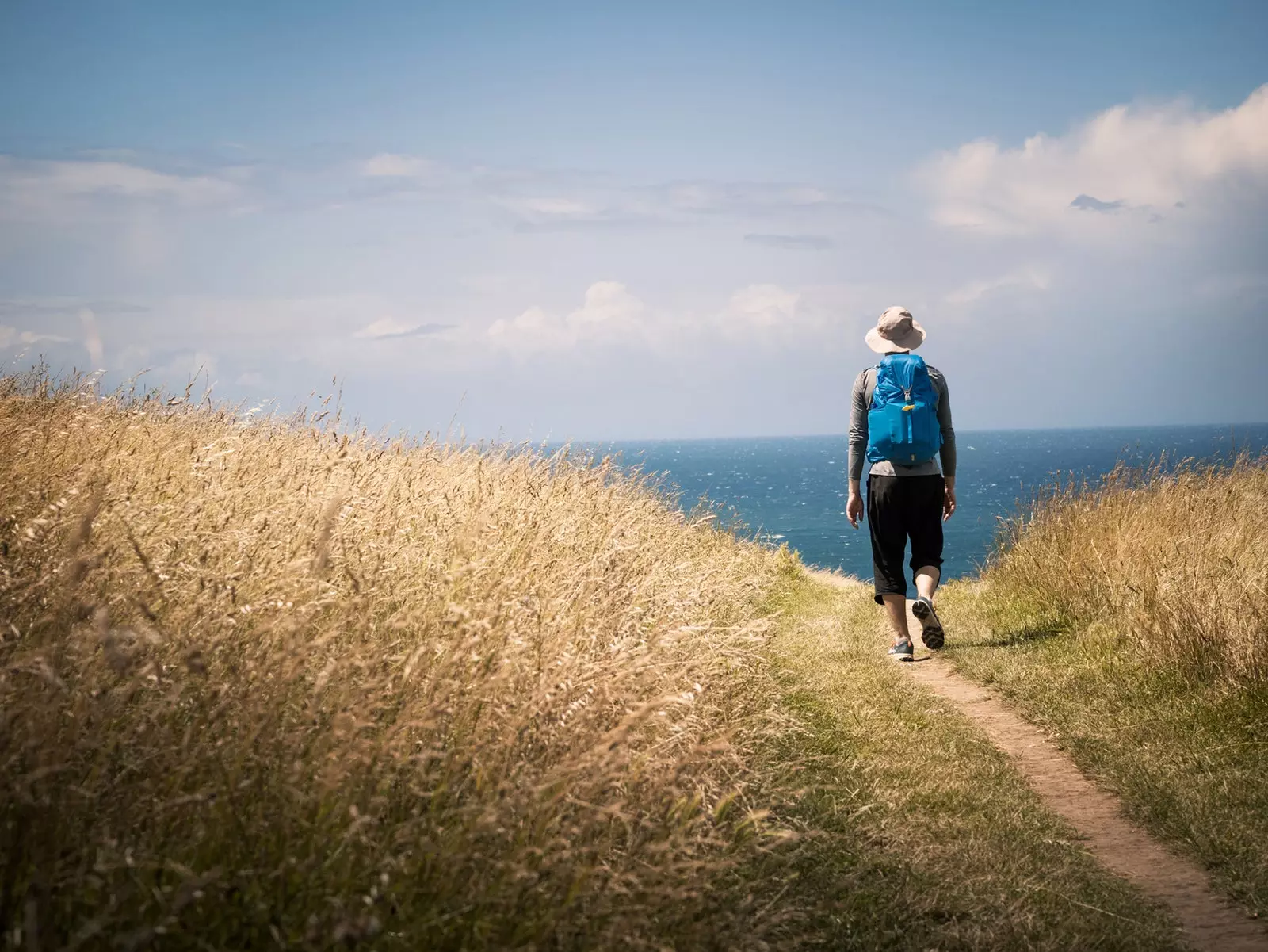
Trails once used by muleteers, sharpeners and smugglers now guide your steps
Through the Val Miñor we see the great treasure of the estuary: the natural park of the Cíes Islands. We continue to San José de Prado using fair paths. These are trails used by muleteers, sharpeners and smugglers who distributed salt to bourgeois houses.
Father Sarmiento, a Galician scholar who ran with the production of seeds, left in his writings marketing plans that take advantage of this particular Camino de Santiago.
THIRD STAGE. SAN JOSE DE PRADO - OS VALOS
We advance through Val Louriña, part of the Louro River, to Val do Fragoso, which borders Vigo . Arriving at his university, CUVI, we head towards the parish of Bembibre to the airport.
We are not worried about not having a passport. It is a transit area which is inspired by American flight documents commissioned by Franco during the Civil War. The cultural center of Alto de Os Valos offers us lunch, dinner and bed.
FOURTH STAGE. OS VALOS - AMIL
It is the queen stage of 37km and it can be done in two days or in one. In the morning we walk 8 km from the Senda da Auga and we eat between carballeiras (oak grove). This is where the pescantinas used to pass, the women who went to get the fish from the dock and distributed it along inland routes, like most merchants, so as not to pay the tariffs on the coast.
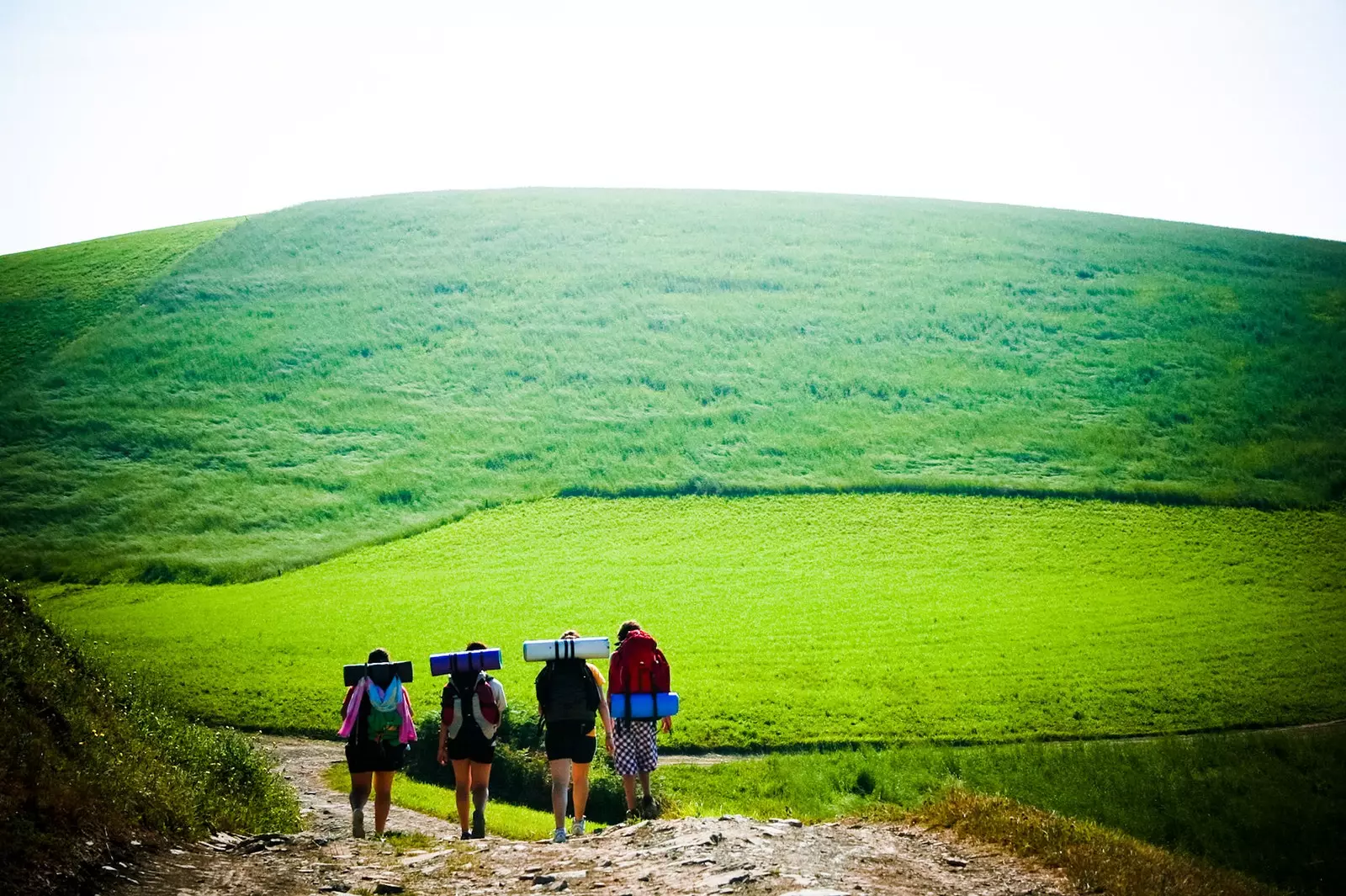
Pilgrims, Santiago awaits you
We take a picture of Redondela viaducts and climb to Pedras Agudas. From there we go through Christ King, we left a coin in the 'peto de ánimas' near Pio Bora and faced the Almofrei river. If it has a lot of flow, it is usually around a meter and a half, there is no other choice but to pull on a swimsuit and cross with the backpack on the head.
FIFTH DAY. AMIL - CUNTIS
We say goodbye to the Ría de Pontevedra and We salute the Ria de Rianxo seen from the top of Moraña.
there is the Pazo la Buzaca , a key point for the muleteers and of all field trajectory. In Moraña we eat to continue two more hours in the afternoon until Cuntis, with an ideal leisure area for the pilgrim that has spas and fountains where to cool off your feet.
SIXTH DAY. CUNTIS - OS TILOS
If the carballeiras from Chan de Bea spoke, they would probably remember more than one exchange of words to move the frames of the farms, Galician sport par excellence. That is, to change the place of the stones that delimit the extension of the farms, causing discussions between the neighbors.
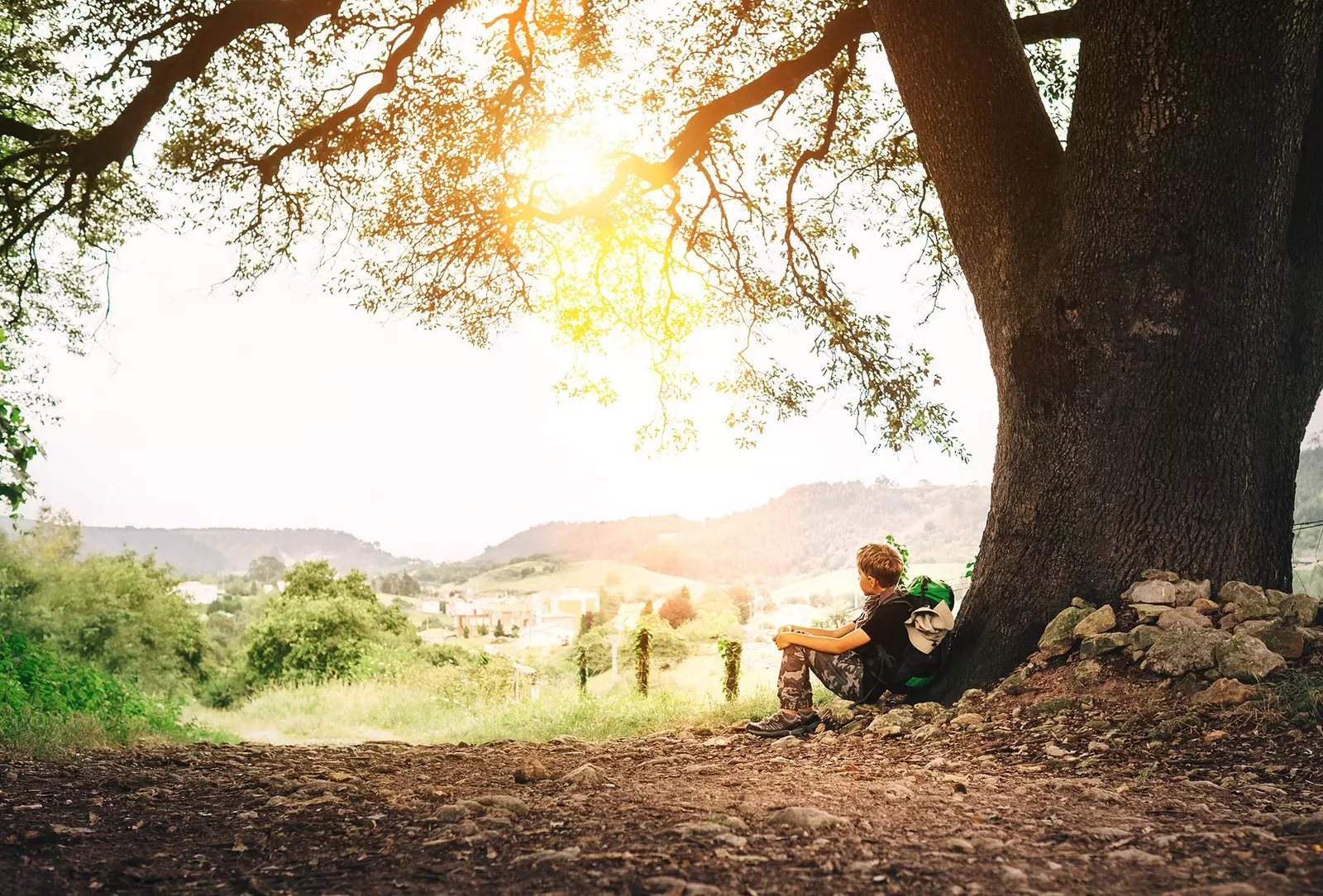
The walker's rest
Campio and family found vestiges of the orchards that the parish allowed the poor to work on Sundays. In their documentation work for the pilgrimage they also compiled toponyms and uses of medicinal and aromatic herbs.
In pontevea, the priest lets us rest in the chapel. The priests and the forest guards were two very important sources of information to trace this entire route.
SEVENTH DAY. OS TILOS- SANTIAGO
It is a small stage, 12 km from the municipality of Teo to Santiago. If it coincides on a Saturday, we can buy potatoes, lettuce or milk at the Peleteiro neighbors' market.
We cross the train tracks, the motorway and, although we start with the Miño, we finish the Camino with the Sar. The picheleiro river accompanies us until we embrace the Apostle.
Today, The Camino de Santiago sin Asfalto is in the process of being recognized by the Xunta and by Patrimonio , so it still does not have the signaling or clearing of the officers. For your interest, Campio Salgueiro organize groups to complete this path or in stages by phone 674 26 24 61.
“I have never charged, but they usually cover my expenses and give the will”, explains this man who has worked eight years on the project without any help. "We just want the great beauty of Galician nature to be valued with respect" , he concludes and encourages to do it on horseback or with the pet.
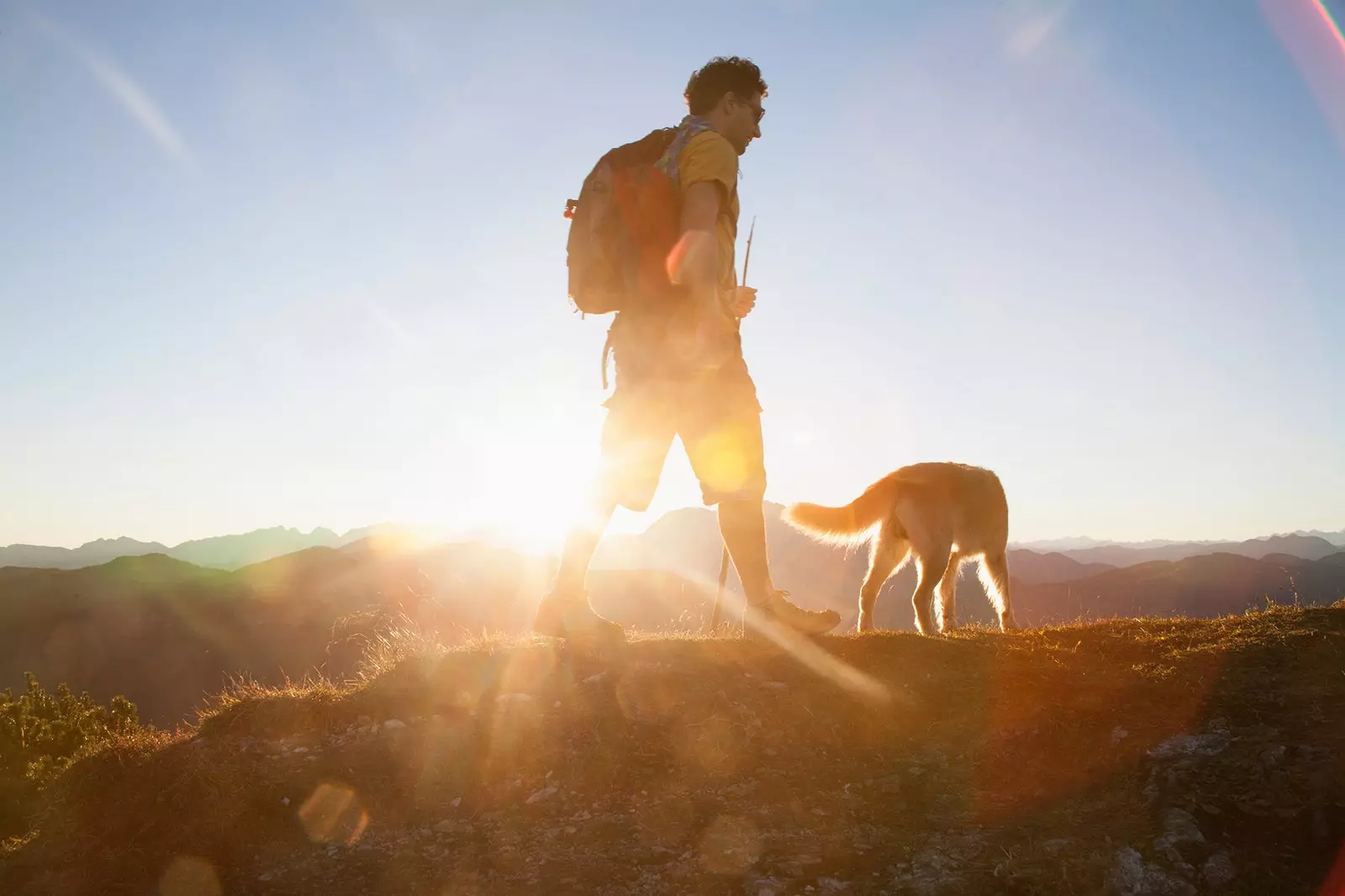
And yes, dare to do it with your best friend
